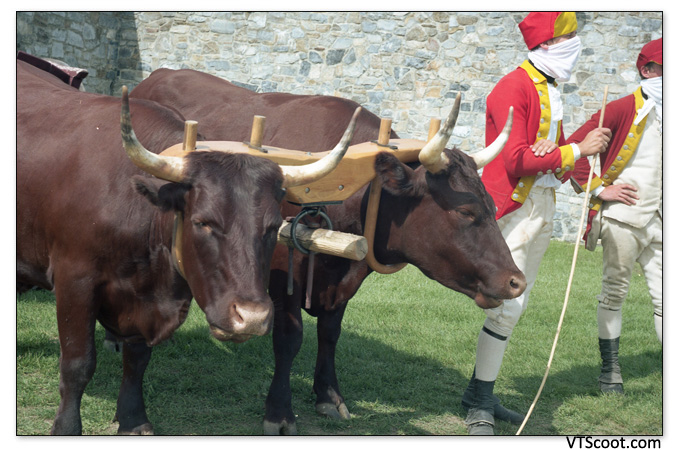Fort Ticonderoga

Just across the lake in Upstate New York, an area rich with history, is the rebuilt Fort Ticonderoga. Built by the French in the mid 1700’s it was a significant fortress situated at the narrows of Lake Champlain, playing a role during the French Indian War and during the American Revolution. It was also a Covid-safe day trip when we felt like getting out of town and going someplace interesting to take photos back in the summer of 2020.
Originally Fort Carillion, it was a site of a famous 1758 battle where 4,000 posted French defended it against 11,000 British attackers. Of course, the Brits later came back and took it anyway. Fast forward to the early days of the Revolutionary War, the Vermont “Green Mountain Boys” militia, led by Ethan Allen (whose farmstead is a mile from my house) and Benedict Arnold (yep, that guy), snuck into the fort and took it from the British without firing a shot. There’s an old illustration of the surrender that I always liked, because it looks like they all walked up to the back door and knocked in the middle of the night, and a guard opened up asking “Who is it?” I’m sure it was less simple than that, I just enjoy the thought of an invasion the looked like something out of an Abbot and Costello movie.

The British came back a couple years later and took the fort back. “Mount Defiance” is a hill overlooking the fort, no one bothered fortifying that location because it was tough to get up there, and they figured no one would ever launch an attack from there because “hard” but then, you know, like something out of a Bugs Bunny cartoon the Brits put a bunch of cannons up there, pointed ’em at the fort and said “Yoo Hoooooo!” So the Continental force said “Fuck it” and left.
After the failure of the Saratoga Campaign, the British abandoned the fort, which now served no strategic importance to the Continental Army, so it was left to rot. Locals came for years to plunder it for building materials, then in 1820 the land was bought by William Pell to build a vacation home on. They attracted a bunch of the New York City friends to come up to visit, then brought more rich New Yorkers up to have bougie summer trips upstate, all with this big crazy ruins just up the hill from their estate. “What’s that up there, you ask? Oh nothing really, just my Revolutionary War fortress, no big deal.” Then in 1909 the family hired an architect to restore and rebuild the old ruins, and they turned it into a historical attraction, probably to curry favor with all their political connections. You know how rich folk do.

I came here once when I was six or seven, came again some 15 years ago to check out a re enactment, and in 2020 I came back to find something interesting to do during that weird summer. The fort museum itself was closed to visitors, because “Covid,” but they have all sorts of things in there from Rev War era dental tools to a portion of Benedict Arnold’s sunken ship. I had never wandered down the hill from the fort to the former summer estate. Again, can’t go inside, but they had been restoring a lush flower and herb garden compound they named The King’s Garden. We liked the garden. We later met a pair of oxen they use to haul cannons and wagons and stuff around, brothers named Mick and Mack (possibly a nod to the Miꞌkmaq) who were born on site several years ago. We liked the oxen. They even had a cannon firing display, where they shot a few rounds over the heads of the small boats fishing in the lake down below. We liked freaking out fishermen by firing cannons at them from an old military fortress.

It was a nice day for a drive into New York. We drove across the lovely bridge we enjoyed during our earlier trip to some other old fortress ruins. There are a lot of these around here. Further up the road near the Canadian border is another. Fort Montgomery, which, unlike these others, is still in its “ruins” state, up for sale to anyone who wishes to purchase the land and restore it as yet another historical military fortress along Lake Champlain.











